Mom Emanuel African Methodist Episcopal Church in Charleston, SC on June 2, 2025.
Catie Uninteresting/NPR
disguise caption
toggle caption
Catie Uninteresting/NPR
CHARLESTON, South Carolina — June 17 marks 10 years since a lethal mass taking pictures at Mom Emanuel African Methodist Episcopal Church shocked the nation. A white supremacist, intent on beginning a race warfare, opened fireplace throughout Wednesday night time Bible examine, killing 9 Black worshippers as they bowed their heads in prayer.
“I used to be right here the night time when it occurred, however I left earlier than he got here in and did the harm,” says longtime church member Theodora Watson.
“I nonetheless do not forgive him since you took one thing out of us and out of this church,” she says of the shooter Dylann Roof, now on federal demise row for the murders.
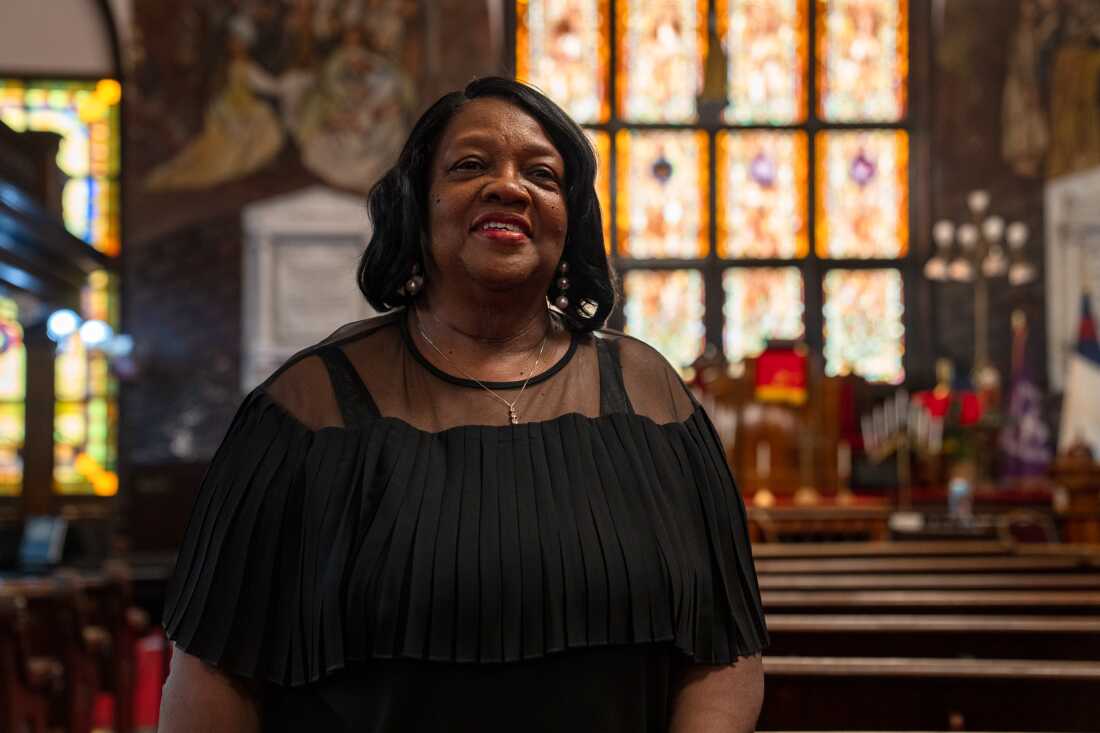
Church member Theodora Watson at Emanuel African Methodist Episcopal Church on June 2, 2025.
Catie Uninteresting/NPR
disguise caption
toggle caption
Catie Uninteresting/NPR
Twice a day, the church bells toll 9 instances, one for every of the Black worshippers killed, now memorialized because the Emanuel 9. They’re the Rev. Clementa Pinckney, Cynthia Graham Hurd, Susie Jackson, Ethel Lee Lance, Depayne Middleton-Physician, Tywanza Sanders, Daniel Simmons, Sharonda Coleman-Singleton and Myra Thompson. 5 others survived — Polly Sheppard, Tywanza’s mom Felicia Sanders and her granddaughter, and the pastor’s spouse, Jennifer Pinckney and one in all their daughters.
“The church was violated,” says Melvin Graham, brother of Cynthia Hurd. “The household was violated, the neighborhood was violated.”
Even a decade later, the reminiscences are recent for the parishioners right here, and it is onerous for them to welcome strangers as their religion calls for.
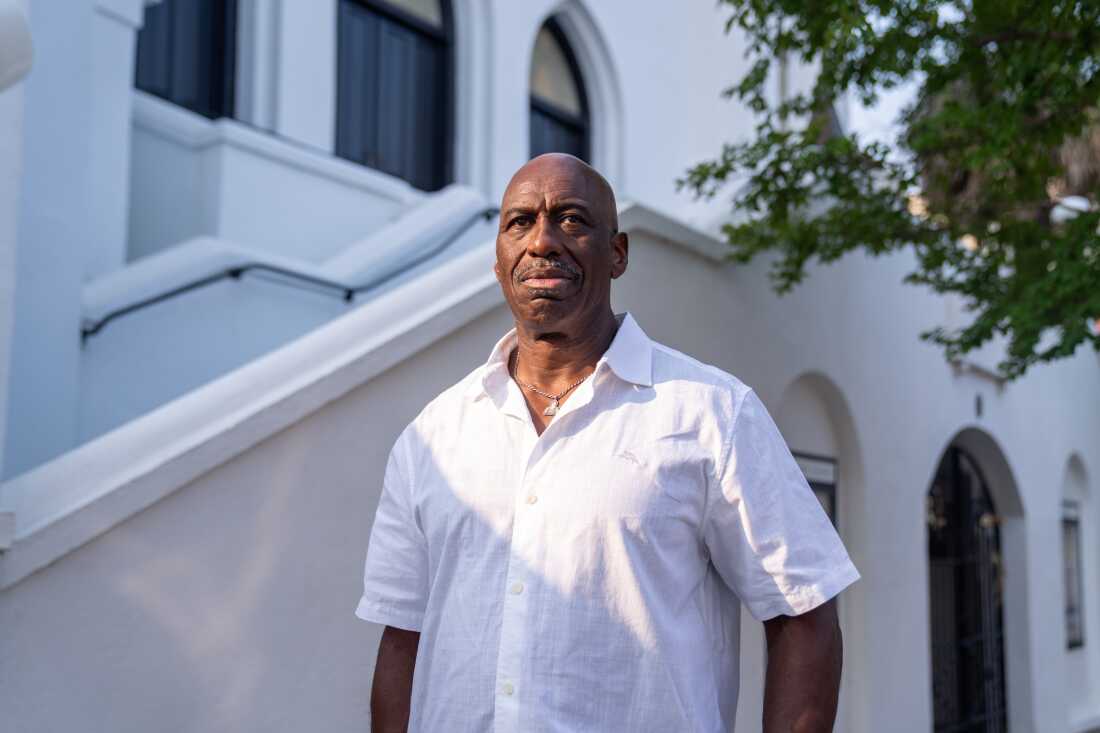
Melvin Graham, Jr., brother of Cynthia Graham Hurd, one of many 9 Black worshippers killed at Emanuel AME. He wears a allure with Cynthia’s picture on his necklace. “When she was executed, I made a promise to be her voice,” he says.
Catie Uninteresting/NPR
disguise caption
toggle caption
Catie Uninteresting/NPR
“I attempt to assist folks perceive that we because the church nonetheless expertise trauma,” says the present pastor, the Rev. Eric Manning. “Each day I come into what was a criminal offense scene. The house the place folks misplaced their lives.”
Reporter Kevin Sack’s new e book frames the tragedy by wanting on the historic legacy of the oldest Black congregation within the South, identified affectionately as “Mom Emanuel” for its function is establishing the AME religion.
“As I used to be protecting the aftermath for The New York Instances, I simply obtained fascinated by the extremely wealthy historical past of this place,” Sack informed NPR.
Titled Mom Emanuel: Two Centuries of Race, Resistance, and Forgiveness in One Charleston Church, Sack’s new e book tells the story of how Mom Emanuel has been on the forefront of the battle for racial justice because it was based in an “act of daring subversion” by enslaved and free African-People within the 1800s.
The Rev. Manning says therapeutic can solely come if the congregation leans into that custom.
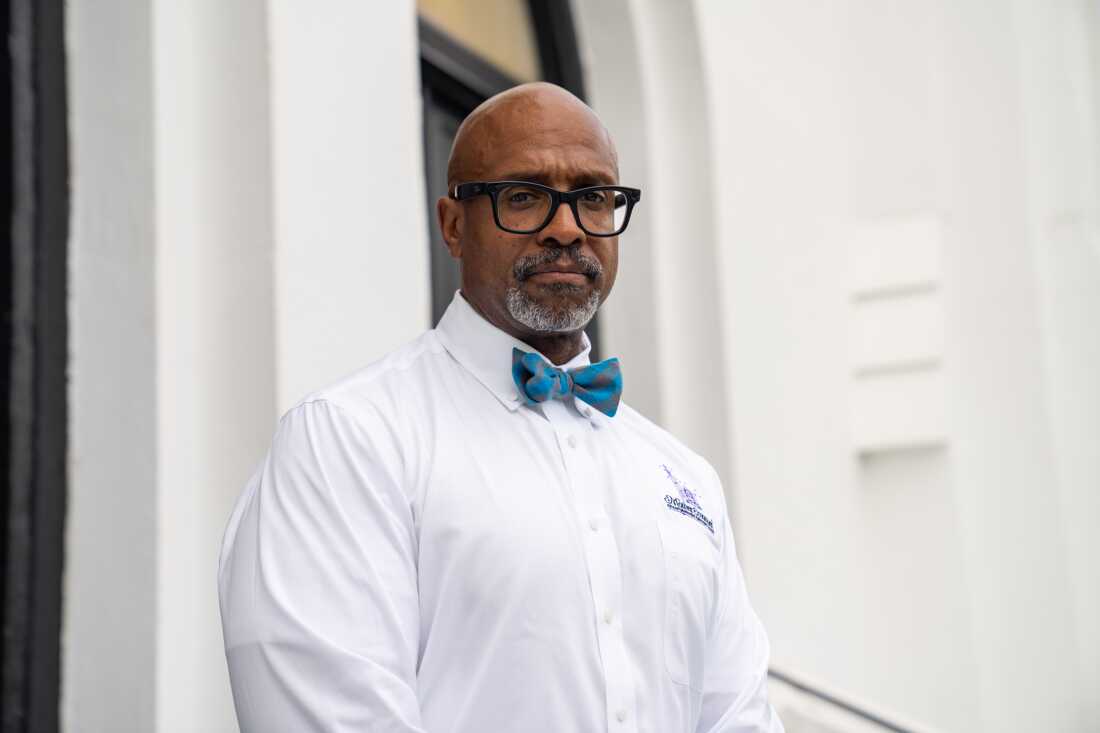
The Rev. Eric Manning says Mom Emanuel’s legacy is to be “a light-weight within the pathway of darkness.”
Catie Uninteresting/NPR
disguise caption
toggle caption
Catie Uninteresting/NPR
“We should be intentional to make it possible for we’re carrying a message of hope, of resilience and of restoration,” Manning says.
These themes — hope, resilience, and restoration — are woven all through Kevin Sack’s biography of Mom Emanuel AME, as he informed NPR’s Debbie Elliott throughout a current interview from the polished pews of the historic sanctuary.

Writer Kevin Sack (R) is interviewed at a e book launch occasion at Emanuel AME Church in Charleston, SC on June 2, 2025.
Catie Uninteresting/NPR
disguise caption
toggle caption
Catie Uninteresting/NPR
The next change has been flippantly edited for size and readability.
Interview Highlights
Debbie Elliott: This isn’t simply the story of that tragic second and that heinous crime. How would you describe what you have been attempting to do with this e book?
Kevin Sack: I used to be deeply affected by what occurred right here that night time. It began to happen to me that there was a method to make use of the church as a car to inform a much wider, bigger story of African-American life in Charleston over a two century interval. The property on which this constructing was constructed dates again to about 1865. However there was a predecessor congregation, solely often called the African Church, that dates all the best way again to 1818. And it was created throughout enslavement in an act of daring subversion. Free and enslaved Black Methodists withdrew from white managed Methodist church buildings on this metropolis and determined to create an autonomous congregation that we are able to management ourselves and the place we are able to worship in the best way that we want.
Elliott: So it had symbolism that Dylann Roof selected this church?
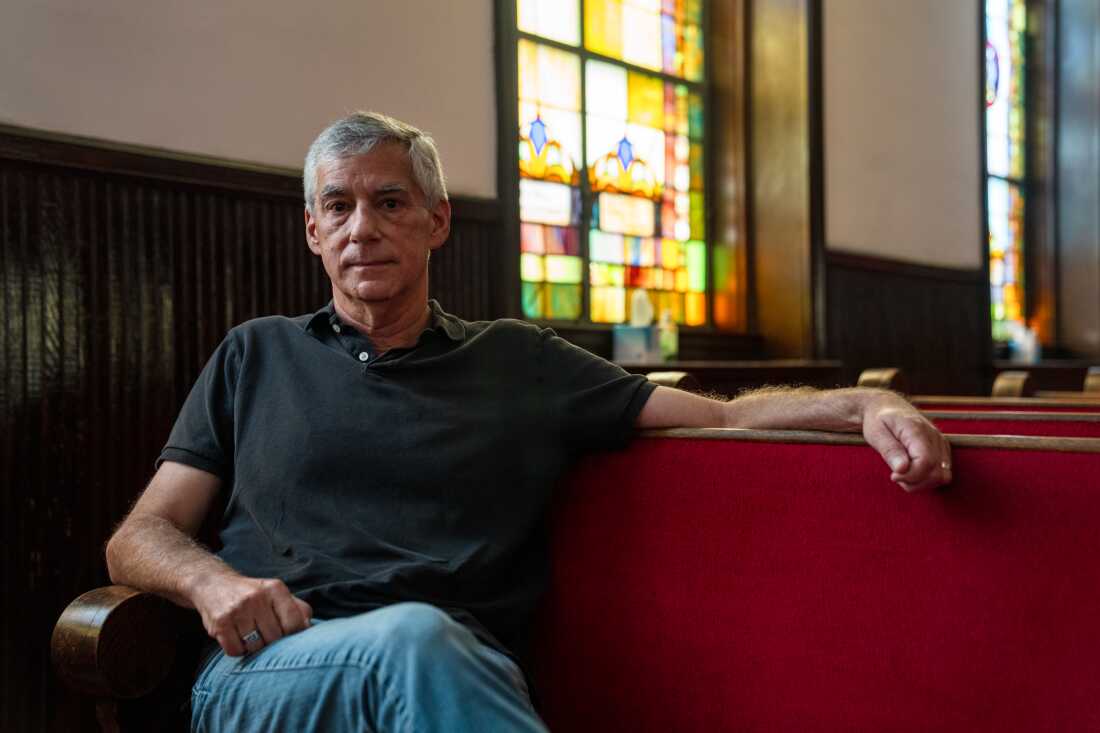
Reporter Kevin Sack says he was moved to write down “Mom Emanuel: Two Centuries of Race, Resistance, and Forgiveness in One Charleston Church,” after protecting the aftermath of the lethal racist assault on the church ten years in the past.
Catie Uninteresting/NPR
disguise caption
toggle caption
Catie Uninteresting/NPR
Sack: I do not know that he knew it, nevertheless it had unbelievable symbolism. It is the oldest African Methodist Episcopal Church within the South, one of many oldest Black congregations of any variety within the South. The church had a big function in type of each main period or motion that we doc as a part of the Black liberation battle on this nation, beginning with the resistance to slavery. There was a slave revolt that was plotted in Charleston, often called the Denmark Vesey Conspiracy. The individuals who have spoken from this pulpit are outstanding. Booker T Washington spoke right here in 1909. W.E.B. Dubois spoke from this pulpit in 1921. Dr. Martin Luther King, Jr. in 1962. His widow got here again in 1969, the yr after his assassination, to steer a hospital staff strike. All through its historical past, the church has been a bulwark of protest in opposition to oppression and discrimination.
Elliott: This church has produced lots of politicians over the many years, together with the pastor who was killed on June seventeenth.
Sack: That is proper. Clementa Pinckney, who was the pastor on the time of the shootings, was an unbelievable prodigy. He was the youngest African American ever elected to the state legislature. He was serving his fourth time period within the state Senate. On the time of the shootings, he was thought-about to be a man with limitless potentialities for the long run. The tragedy of his life being lower so brief follows this sample that we see proper within the Civil Rights Motion of dynamic younger leaders being lower down method earlier than their time.
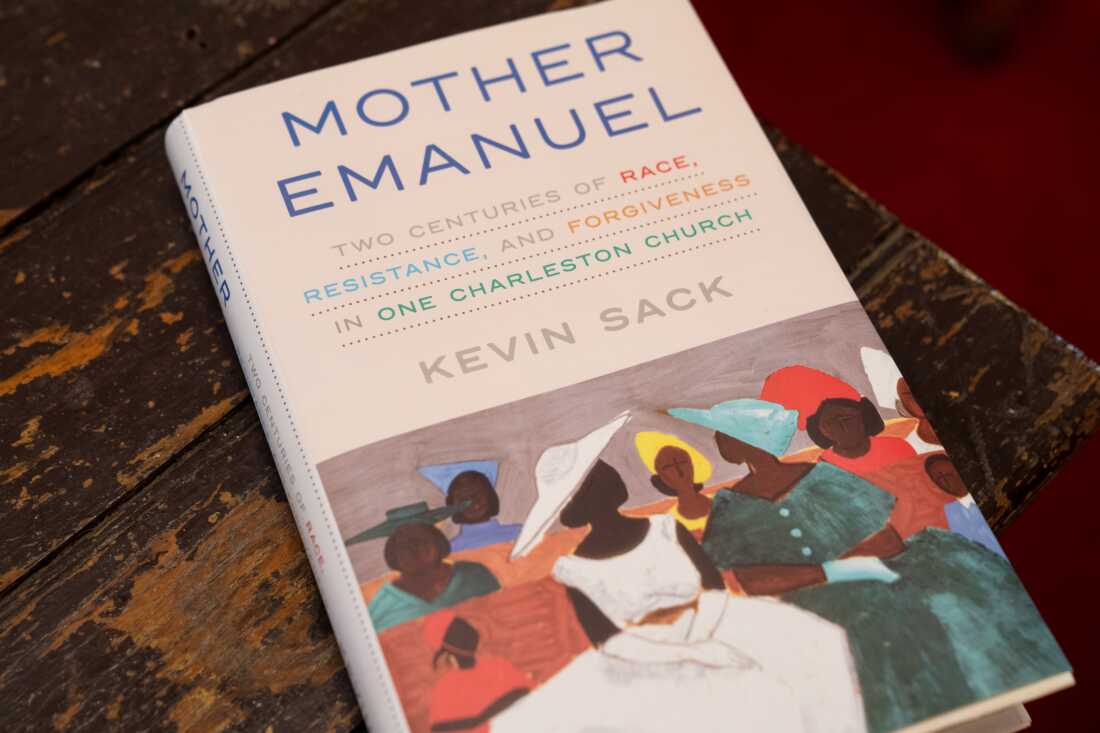
Kevin Sack’s new e book is “Mom Emanuel: Two Centuries of Race, Resistance, and Forgiveness in One Charleston Church.”
Catie Uninteresting/NPR
disguise caption
toggle caption
Catie Uninteresting/NPR
Elliott: You write that, “for a second, June seventeenth gave the impression to be the night time previous Dixie died.” How has the thought of Charleston as a sort of mannequin for reconciliation advanced over these final 10 years?
Sack: A few vital symbolic achievements got here within the aftermath of this occasion. The Accomplice flag that was flying outdoors the statehouse in Columbia was introduced down due to the shut affiliation between the shooter and the flag. There additionally was a decision by the town council right here to apologize for the town’s function in slavery. Apparently, although, the vote on that decision was seven to 5. I do suppose there was a Charleston earlier than 2015 and the Charleston after 2015, they usually’re not precisely the identical place. But it surely continues to be a metropolis that’s working its method by way of a really lengthy and really oppressive racial historical past.
